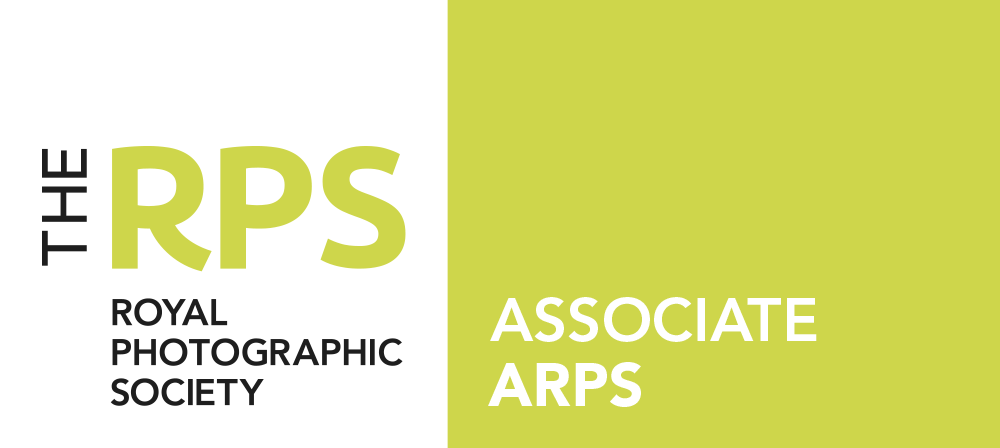Social Documentary in nature, my images are inspired by Pictorialism; an international style and aesthetic movement that dominated photography during the later 19th and early 20th centuries. A pictorialist views a photograph like a painting, drawing or engraving, as a way of projecting an emotional intent into the viewer's realm of imagination (https://en.wikipedia.org/wiki/Pictorialism, 2016). The work of the English Pictorialist Henry Peach Robinson (1830-1901) and French Pictorialist Robert Demachy (1859-1936) are excellent examples of this.
Robinson’s seminal work "The Pictorial Effect in Photography" (1867) introduced the concept that photography is an art form - giving photographers the freedom to capture an image like that of a painter and that photographers should have as much freedom to manipulate or adjust the captured image as a painter (https://juliamargaretcameronsecession.wordpress.com/julia-and-the-photo-art-of-pictorialism/, 2014).
Demachy, best known for his manipulated prints, displayed a distinct painterly quality influenced by the Impressionist painters. A strong proponent of manipulation techniques, he author thousands of articles and several books (http://monovisions.com/robert-demachy-biography-pictorial-photographer/, 2016).
This project invites you to delve into the world of contemporary documentary photography by focusing attention on the "metaphorical, abstract, conceptual, and invisible" (http://artdaily.com/news/48710/Photographers-Examine-the-Fine-Line-Between-Documentary-and-Fine-Art-Photography#.WFKRu9V96Uk, 2008). Expressing an image in the traditional documentary genre does not offer me the artistic opportunity to fully explore my emotional connection. Incorporating a Pictorialist style, allows me to put my "hand on the image" affording me greater artistic licence to develop levels of unexpected complexity to communicate my thoughts behind each photograph.
The inspiration for this project was derived from my experience interacting and befriending Muslims in Kuwait for over four years. I sincerely believe that the recent portrayal of Islam and Muslims by the mass media is biased. The media stereotype that the faith is not peaceful is based on 0.01% of the Islamic population. I offer a dialogue that will allow you a different perspective on which base your opinions and behaviours. According to The Institute of Economics and Peace there are eight qualities towards peaceful existence.
The quality of "Good relations with neighbours" is one such indicator. Living in a complex world we cope by making sense of this information by placing 'things' into categories to make our world simpler. A disadvantage of this heuristic is stereotyping e.g. all Muslims into the same category as a small minority - Jihadist Radicals. My project, The Five Pillars of Islam is intended to balance views.
I see in my everyday life people of different faiths co-existing - raising their families as best they can. The best cure from stereotyping or fear is simply to face your fears. Get out of your comfort zone and get to know the ‘other’! Go to lunch with your Muslim classmates or pay a visit to your Muslim neighbours. You’ll be surprised by their ‘normality’ (http://mvslim.com/10-reasons-for-a-non-muslim-to-become-friends-with-a-muslim/). This project, explaining the five pillars of Islam (thereby demystifying it) makes it accessible to all, and it is my hope that we can find courage in the face of this portrayed stereotype.
1. Shahaadah (Testimony), Declaration of Faith
The First Pillar of Islam, Shahaadah.
Muslims declare their faith by saying: "Ash hadu anlaa ilaaha illallaahu wa ash hadu anna muhammadar rasulallah". Which means "I bear witness that there is no god except Allaah, (Peace and blessings be upon him, the Arabic word for God) and I bear witness that Muhammad is the Messenger of Allaah (Peace and blessings be upon him).
2. Salaah (Prayer), Five Compulsory Daily Payers
The Second Pillar of Islam, Salaah
A physical and mental means of worship prescribed five times a day. These are to remember God and to seek forgiveness throughout the day. You face towards the Holy Kaa'bah in Makkah. Salaat (Prayer) is performed at set times: before sunrise, at midday, in the afternoon, in the evening after sunset and at nightfall.
3. Zakaat (Purity or Charity), Almsgiving
The Third Pillar of Islam, Zakaat.
The Arabic word Zakaat means to purify. Muslims give 2.5% of their surplus wealth to charity every year. This shows obedience to God and prevents greed. Zakaat is given to the poor and those less fortunate than ourselves. It is believed that by giving charity, the possessions you keep are made pure.
http://www.mostresource.org/infographics/
4. Sawm (fasting), Fasting During the Month of Ramadhaan
The Fourth Pillar of Islam, Sawm.
For one month of the year, Muslims refrain from food, drink and keep away from things that distract them from worship. This is done during the day from dawn to till dusk. Although fasting is beneficial to health, fasting is a form of worship. Additionally it helps them to remember others who are less fortunate and do not have much food or water.
5. Hajj (Pilgrimage), Pilgrimage to the Holy Sites in Makkaah
The Fifth Pillar of Islam, Hajj.
Hajj is the journey to the holy sites in Makkaah to perform various rituals. It is only obligatory once in a life time upon those who have the financial means and are physically able. The pilgrims adorn a simple garment that strip away any distinctions of class and culture, so they all stand equal before Allah (God). The final part of the pilgrimage is at the Holy Ka'bah (cube) in the centre of the Great Mosque in Makkaah. http://www.mostresource.org/infographics/
On any Friday night you'll find Abdulla, his wife Noura and three children Fawaz (7), Reema (5) and Alzain (1.5) getting together at their parents house with his sisters to share a meal like many families around the world irrespective of faith.
Final image after pictorialist interpretation - Image still retains some photographic qualities however blurring (do not see a clear picture at start of relationship) and grain (communication noise) have been added and natural colours removed to communicate that in new relationships you do not get a full understanding of the relationship when you meet someone for the first time and you put your interpretation of what you see (the tint) with the information you have been able to obtain.
Final image after pictorialist interpretation - Image still retains some photographic qualities. The image now displays less blurring (relationships are starting to become clearer) and grain (communication noise still present) added and some colour retained to communicate that the new relationship is in early stages of maturity, however you do not get a full understanding of the relationship and you put your interpretation of what you have learnt so far.
As you progress through the evening the colours start to become more saturated as you learn more about your new friends. There is a distinct painterly style representing there are still personality layers that need to be uncovered as people will not reveal their true self until there is total trust.
Kids will usually act more naturally quicker as they have not yet built up self protective mechanisms. A nice, simple moment is captured as Reema finishes off her dessert. The image represents innocence of children and their trusting nature. A common trait among most cultures Muslim and Non-Muslim.
Still very young, Alzain looks intently at me "the stranger" under the close protection and trusting motherly bond. This image again reinforces the relationships we expect to see within families, Muslim or Non-Muslim.
Two sisters share an intimate moment. The Friday night tradition helps maintain family bonds as siblings get older, it also gives the opportunity for the children of the new families to bond and build new and long lasting relationships, adding to the feeling of togetherness and a circle of safety and support.
When Abdulla is asked what he wants for his children, he replies "I want Prosperity for my children when they grow up." A loving dad wanting a simple hope that if achieved will provide a potentially safe life for his children.
When Noura is asked the same question she hopes that she picks the same as Abdulla has thought. While different "I want success for my children when they grow up." Again, a simple wish from Mom if achieved will provide a safe life for her children.
The unexpected face of Fawaz shows up. I thought a fitting final image as it depicts the normality of the evening spent with a Muslim family.
We are all from the same family, the human family. As families we are all are bit different. However the more we can come together to build relationships and get to know each other better the stronger we can become.
Everywhere, adults ask children"What do you want to be when you grow up?" Muslim kids are no different, they have dreams as well.
"I want to be a Library Engineer when I grow up." (Fawaz)
... and sometimes when you ask younger kids you get some unexpected answers. "I want to be a Motorcycle when I grow up."
Young kids love to draw and seek approval from their parents, Alzain is no different, a natural family portrait.
Through the use of a pictorial style I have been able incorporate additional effects that better express my intentions to communicate the transformation of personal relationships over time.
The media would have portrayed this family as people to be feared, a threat. By welcoming me into their home I am able to share with you part of my everyday interactions with Muslims. Each of us need to appreciate that through greater understanding there is nothing more to fear than from any other faith.
"Understanding replaces Stereotyping" (Peter Smith, 2017)

